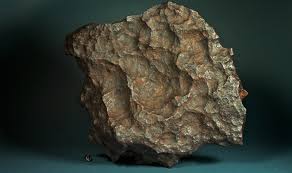The Wonders of Meteorite Specimens
Meteorite specimens are not just rocks from outer space; they are windows into the mysteries of the universe. These extraterrestrial fragments have captivated scientists, collectors, and enthusiasts for centuries, offering valuable insights into the formation of our solar system and beyond.
What Are Meteorite Specimens?
Meteorites are solid objects that survive their journey through Earth’s atmosphere and reach the surface. These specimens come in various shapes, sizes, and compositions, depending on their origin within our solar system. Some meteorites contain rare elements or minerals not found on Earth, making them highly prized for scientific research.
Types of Meteorites
There are three main types of meteorites: stony meteorites, iron meteorites, and stony-iron meteorites. Stony meteorites are composed primarily of silicate minerals and make up the majority of meteorite finds. Iron meteorites consist mainly of iron-nickel alloys, while stony-iron meteorites contain a mix of both silicate minerals and metal.
Collecting Meteorite Specimens
Collecting meteorite specimens has become a popular hobby among enthusiasts who appreciate the rarity and uniqueness of these extraterrestrial treasures. Meteorite hunters scour remote areas for fallen meteorites or purchase specimens from reputable dealers to add to their collections.
Scientific Significance
Scientists study meteorite specimens to learn more about the early solar system’s formation and evolution. By analyzing isotopic compositions, mineral structures, and chemical signatures within meteorites, researchers can uncover valuable information about planetary processes and conditions in space.
The Appeal of Meteorite Specimens
Beyond their scientific value, meteorite specimens hold a special allure for many people due to their cosmic origins and unique characteristics. Holding a piece of a distant asteroid or planetoid in your hand can evoke a sense of awe and wonder at the vastness of the universe.
In Conclusion
Meteorite specimens offer us a glimpse into the wonders of space and time, providing tangible connections to celestial bodies far beyond our reach. Whether for scientific research, collecting hobbies, or simply marveling at their beauty, these extraterrestrial rocks continue to fascinate us with their stories from the cosmos.
7 Essential Tips for Handling and Preserving Meteorite Specimens
- Handle meteorite specimens with clean hands to avoid contamination.
- Store meteorites in a dry environment to prevent rusting or corrosion.
- Use gloves when handling iron meteorites to avoid staining your hands.
- Avoid exposure of meteorite specimens to strong chemicals or acids.
- Keep meteorites away from extreme heat sources to prevent damage.
- Label your meteorite specimens with information like type, location, and date found.
- Consult experts or resources to learn more about identifying and preserving meteorite specimens.
Handle meteorite specimens with clean hands to avoid contamination.
When handling meteorite specimens, it is essential to use clean hands to prevent contamination. The oils, dirt, and residue on our hands can potentially affect the integrity of these extraterrestrial rocks. By ensuring that our hands are clean before touching meteorite specimens, we can preserve their unique composition and properties for scientific study and enjoyment.
Store meteorites in a dry environment to prevent rusting or corrosion.
To preserve the integrity and beauty of meteorite specimens, it is essential to store them in a dry environment to prevent rusting or corrosion. Moisture can lead to oxidation of iron-rich meteorites, causing them to deteriorate over time. By keeping meteorites in a dry space with controlled humidity levels, collectors and enthusiasts can ensure that these extraterrestrial treasures remain pristine and retain their scientific and aesthetic value for years to come.
Use gloves when handling iron meteorites to avoid staining your hands.
When handling iron meteorites, it is advisable to use gloves to prevent staining your hands. Iron meteorites can contain nickel and other metals that may oxidize upon contact with skin oils, leading to discoloration. By wearing gloves while handling these extraterrestrial specimens, you can protect your hands and maintain the integrity of the meteorite’s surface.
Avoid exposure of meteorite specimens to strong chemicals or acids.
It is crucial to avoid exposing meteorite specimens to strong chemicals or acids, as these substances can damage the delicate composition of the extraterrestrial rocks. Meteorite specimens are unique and valuable artifacts from space, and preserving their integrity is essential for scientific study and collection purposes. By handling these specimens with care and avoiding harmful substances, we can ensure that their beauty and significance remain intact for future generations to appreciate and learn from.
Keep meteorites away from extreme heat sources to prevent damage.
To preserve the integrity of meteorite specimens, it is crucial to safeguard them from extreme heat sources that could potentially cause damage. Exposure to high temperatures can alter the composition and structure of meteorites, compromising their scientific value and aesthetic appeal. By storing meteorite specimens in a cool and stable environment, collectors and enthusiasts can ensure that these extraterrestrial treasures remain pristine for future generations to admire and study.
Label your meteorite specimens with information like type, location, and date found.
When collecting meteorite specimens, it is essential to label each piece with pertinent information such as its type, location of discovery, and the date it was found. This labeling not only helps in organizing your collection but also provides valuable context for each specimen. Knowing the type of meteorite, where it originated from, and when it was found adds depth to the story behind each piece and enhances its scientific and historical significance. Properly labeled meteorite specimens become more than just rocks; they become artifacts that carry a piece of the cosmos with them.
Consult experts or resources to learn more about identifying and preserving meteorite specimens.
Consulting experts or reliable resources is essential when it comes to identifying and preserving meteorite specimens. Meteorites come in various types and compositions, making accurate identification crucial for understanding their origins and scientific significance. By seeking guidance from experienced professionals or utilizing reputable sources, enthusiasts can deepen their knowledge of meteorites and ensure proper preservation techniques to maintain the integrity and value of these extraordinary extraterrestrial artifacts.

